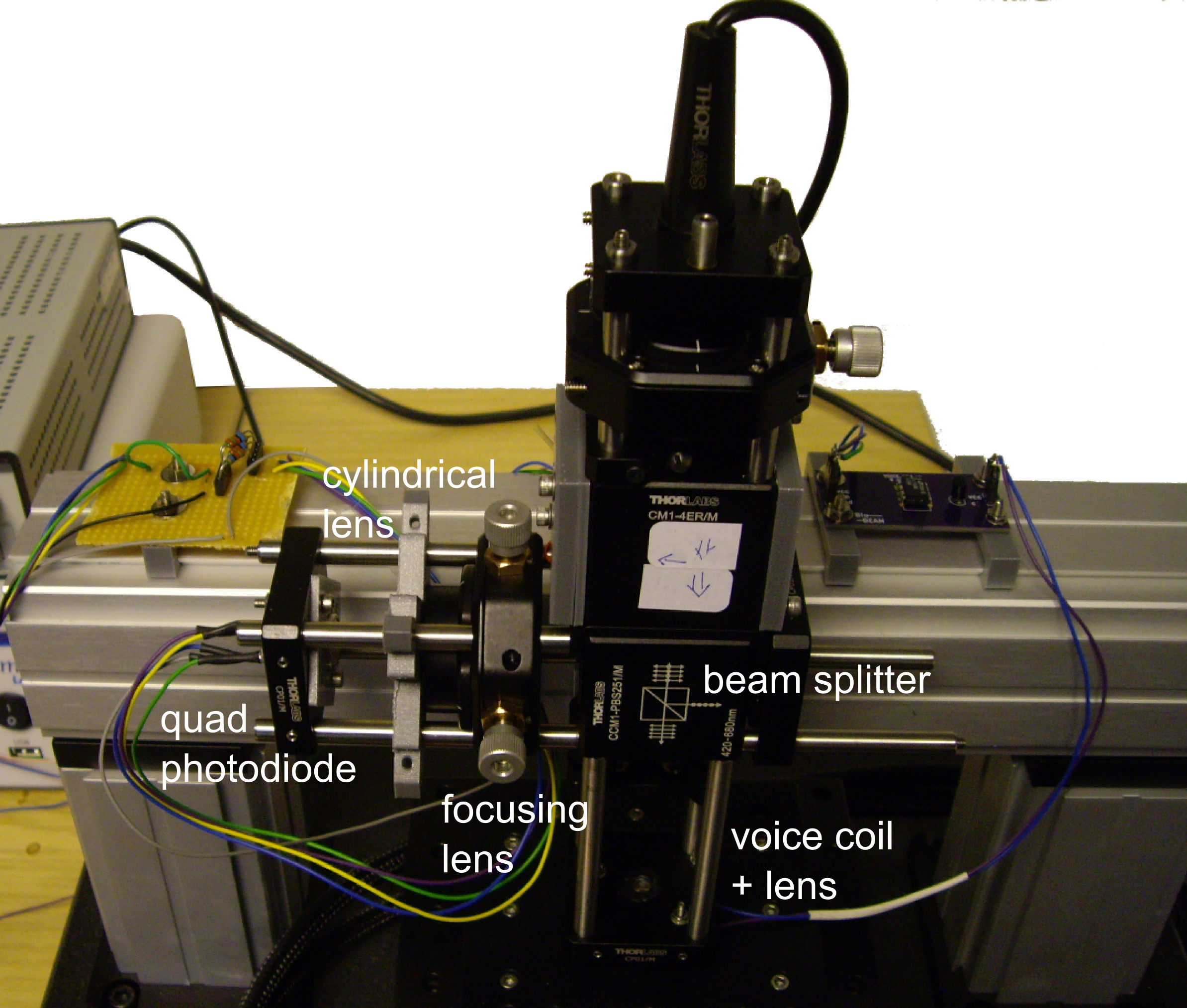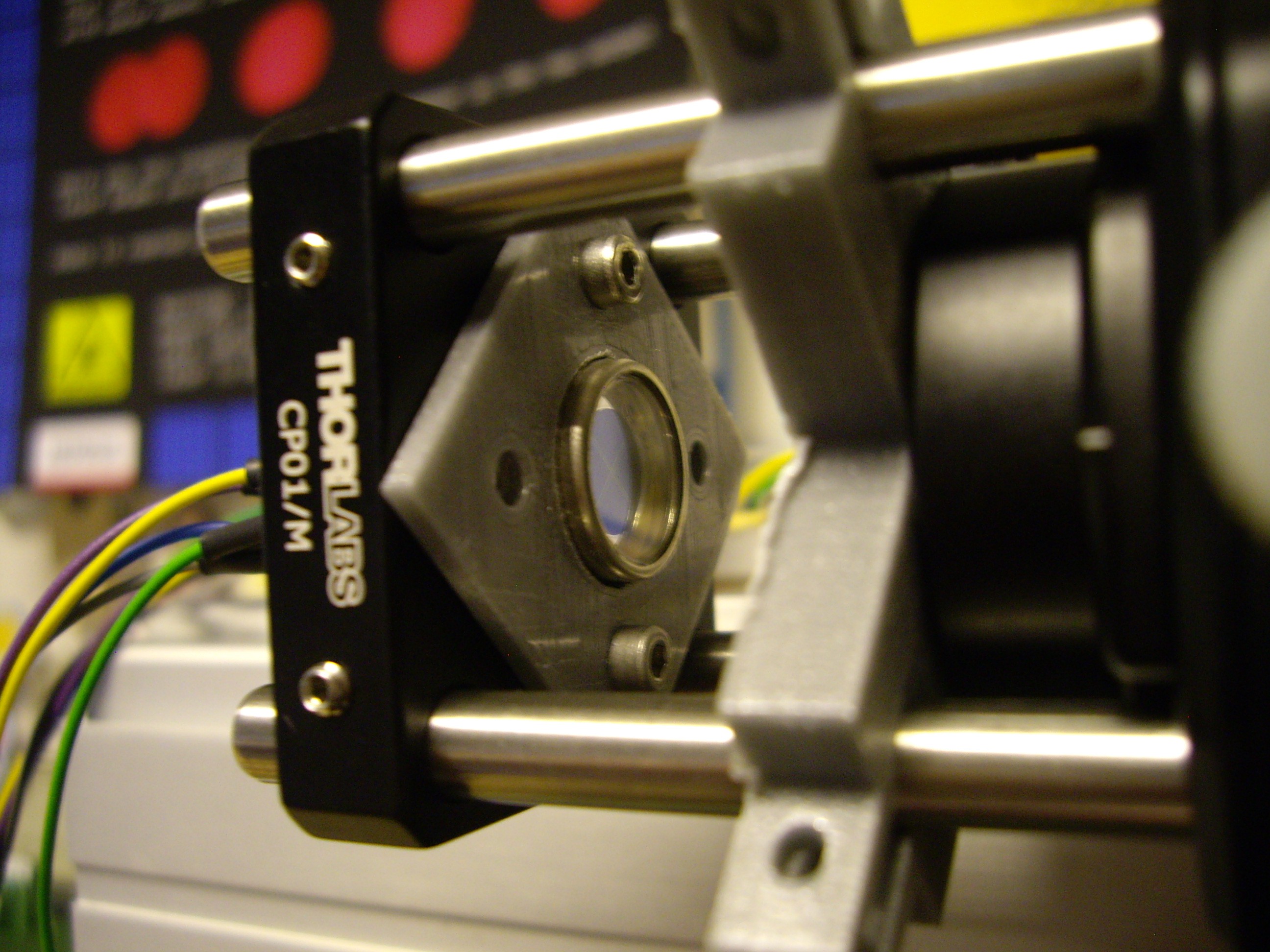It's been a while now since my last log and here's why: We have been busy building a mock-up of the read-head from larger, conventional optical components.
The PS3 read-head is great as it got everything we need neatly packed into a small form factor. However, because it's such a well engineered piece of tech, the margins for things like head - sample misalignment are small, very small. In fact that was our biggest challenge with it so far, to get the returning beam to hit the built-in quad-photodiode. A quick and dirty comparison of the quad-diode with diffraction grating showed that it's only a few tens of micrometers in size. Which means that a misalignment of less than a degree already brings us way off the little sensor.
We still wanted to check that we can focus using the cylindrical lens approach, so we built this mock-up:

It works in exactly the same way, bringing a collimated blue laser beam through the voice coil + lens assembly from the PS3-head, diverting the returning beam with a beam splitter, and finally acquiring the signal with a quad photodiode.
The voice coil is controlled by our custom made driver PCB, with the set-point voltage coming from a PC DAQ card. We use the same DAQ for the quad-diode later.
We also have another focusing and a cylindrical lens between the beam splitter and detector, to give us the elliptical-circular-elliptical shape for focusing.
The quad-diode itself is pretty big and the last focusing lens is mounted on a translation state, which together allows us to compensate for misalignment in the setup.
So let's see whether we can now compensate for misalignment and get the elliptical-circular-elliptical data we're looking for.
Here's what we do to get there:
The quad-diode is oriented in such a way that the two elliptical out of focus beams will cover two opposite quadrants each. So first of all we adjust the system in such a way that all signals from all four quadrants (A,B,C,D) are equal when we move the voice coil through the focal point.

You can already kind of guess where that focal point is from the above, but the easiest way of finding the "circle of least confusion" (where the cylindrical lens doesn't distort the beam in any direction) is to compute the so called "S-curve" by calculating (A+C) - (B+D), where A & C, and B & D are opposite quadrants. The circle of least confusion is then at 0, because that's where all quadrants are hit by exactly the same intensity.

So what we see here (from left to right) is first very little signal because we're way out of focus, then more and more light from one elliptical orientiation. The middle part is what gives this the name S-curve, when we go from one ellipsoid through the circle of least confusion to the other elliptical beam. The photodiode is also picking up a good amount of stray light, which means that the circle isn't at 0 here, but at some offset.
All in all I'm very happy with these results. We're not using the read-head itself, but with the mock-up we are able to get the auto-focus principle to work and we circumvent the alignment problem by introducing an additional translation element.
 andreas.betz
andreas.betz


Discussions
Become a Hackaday.io Member
Create an account to leave a comment. Already have an account? Log In.